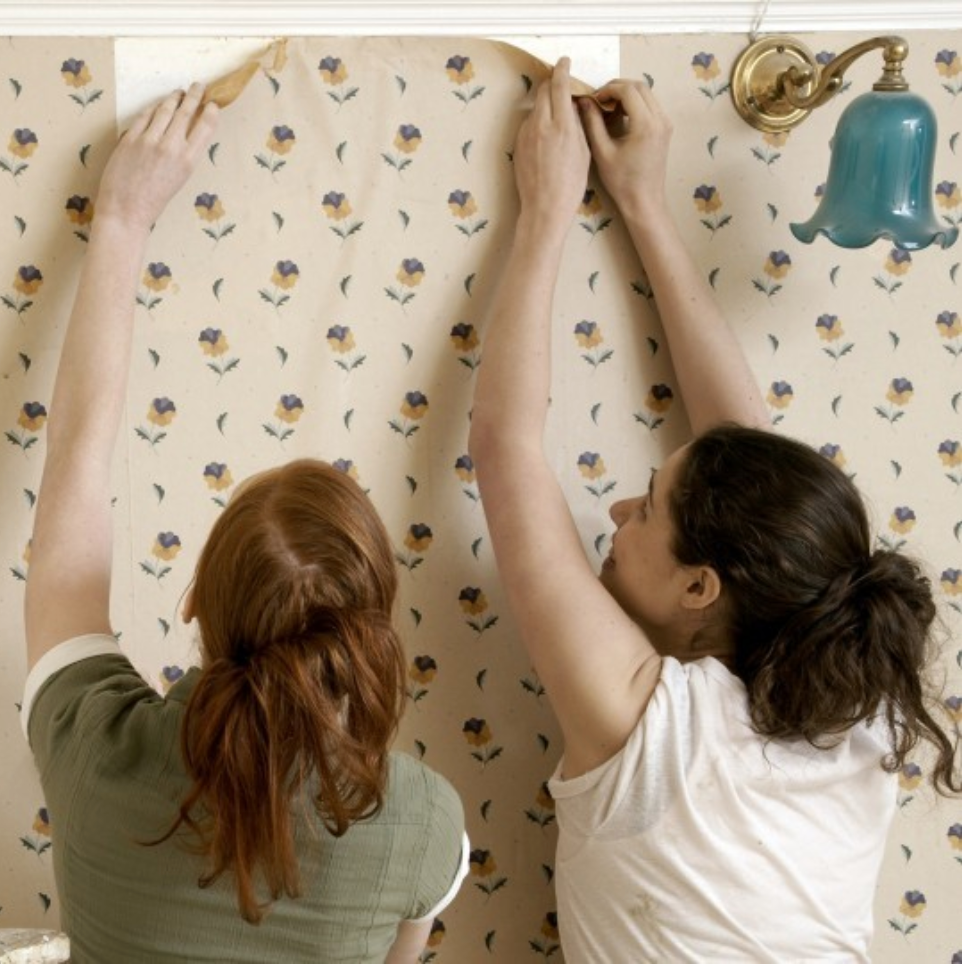Why Wallpaper?
Paint vs. Wallpaper
While few people would debate the aesthetic excellence of wallcoverings over paint, some might be surprised to learn that, over time, vinyl wallcoverings are also a wise economical choice. According to the latest Hite Report, developed for The Bell Systems by Jim Hite, lifecycle analysis shows that wallcoverings now last five times longer than paint, under normal usage conditions. Most vinyl wallcoverings can retain their original beauty and performance characteristics for at least 15 years, whereas a painted surface must be cleaned more frequently to maintain its appearance and generally requires repainting approximately every three years.
While the initial investment is higher, choosing vinyl wallcovering over paint can result in a savings of 30% or more over time. The following model is based on commercial usage. In home decor, the savings can be even greater. Our model is in United States Dollars and based on information from the Hite Report. The model is a 384 square foot office. Assuming that the initial cost to prime and paint is $173.00 (or $0.45 per sq. ft.), and that the room will be repainted every 3 years, the cost of maintaining this office over a 15 year period, with paint, will be $1,037.00, provided the cost of material and labor does not increase over the next 15 years. Using vinyl wallcoverings estimated at $1.69 per square foot including cost and installation, we assume a worker will wash the walls every 5 years at a cost of $0.33 per sq. ft., bringing the cost to $1.79 per sq. ft. over a 15 year period to $687.00. In dollar values, the cost of maintaining paint versus wallcoverings is $1,037.00 versus $687.00 over the same period of time. A savings of over 35%!
Aesthetic Appeal
Modern wallcoverings contain aesthetic appeal unmatched by painted surfaces. Consider painted surfaces in their various states as compared to wallpaper:
- Flat Color: One room, one color.
- Accent Wall: One room, one color except for one uniquely colored wall.
- Textured Paint: Paint containing a media to give it texture.
- Custom Paint: Mural designs using paint.
- Faux Finishes: Custom paint designs that add pattern and depth.
While most people are familiar with these major painting techniques, many are uninformed as to their counterparts in wallpaper. As well, few know of the unique features that one can only obtain with wallpaper.
- Flat Color: Though not particularly popular, there are single color wallpapers available.
- Accent Wall: Can be achieved by utilizing wallpaper on one wall.
- Textured Paint: There are many varieties of textured wallpaper from plain to ornate.
- Custom Paint: Wallpaper manufacturers have a wide variety of mural wallpaper.
- Faux Finishes: Most popular faux finishes have their wallpaper counterparts.
- Historic Aspect: Imagine a Victorian style house without wallpaper.
- Digital: Computer generated designs custom printed onto wallpaper.
- Photographic: Consider creating custom wallpaper using family photos.
- Bridging Material: Using this special blank wallpaper, one can eliminate the costly and messy removal and repair of an unattractive textured or damaged wall surface.
- Faux Surface: Applying an expanded texture wallpaper followed by paint is a way to replicate the look of an expensive tin ceiling or intricate molding with a greatly reduced cost.
- Natural Surface: Discover the luxury of natural fibers on the wall such as jute, grasscloth, or bamboo among others.
- Fabric Walls: Cover your walls with your favorite fabric. Fabric may be hung as it comes off the bolt or backed and coated for increased durability as a true wallcovering.
- Wood Surfaces: The application of wood veneer wallcovering in a variety of species adds formality at a fraction of the cost of a traditional wood paneling.
Increased Functionality
Consider the use of the following specialized wallcoverings:
- Whiteboard wallcovering: Allows the use of special dry erase markers for presentations or notes. Though predominately used in commercial settings, this type of wallcovering would also be excellently suited for a child's room.
- Magnetic wallcovering: Allows the use of magnetic appliqués for presentations. Though predominately used in commercial settings, this type of wallcovering would also be excellently suited for a child's room.
- Electromagnetic shielding wallcovering: Used in commercial applications to reduce the amount of electromagnetic interference associated with many industrial applications such as computer rooms.
- Scented wallpaper: A wallpaper comprised of fibers that naturally give off a soothing fragrance such as lavender or jasmine. Deodorizing wallpaper: Wallpaper infused with charcoal particles which act as a natural deodorizer.
- Acoustic wallcovering: Though traditionally associated with commercial applications, these are more commonly utilized in homes with expensive surround sound systems or home theaters. These wallcoverings are specifically engineered to absorb sound energy.
- Glow in the dark wallcovering: Create a funky black light environment with fluorescent wallpaper.
- Cork wallcovering: Useful as either a bulletin board, a natural sound deadening material, a natural wallcovering, a textured wallcovering, or a combination of its many functions.
- Metallic or organic wallcovering: Imagine the impact of real copper or mica flakes as a wallcovering.
- Leather wallcovering: Consider the unparalleled warmness that only be obtained with a leather wallcovering.

